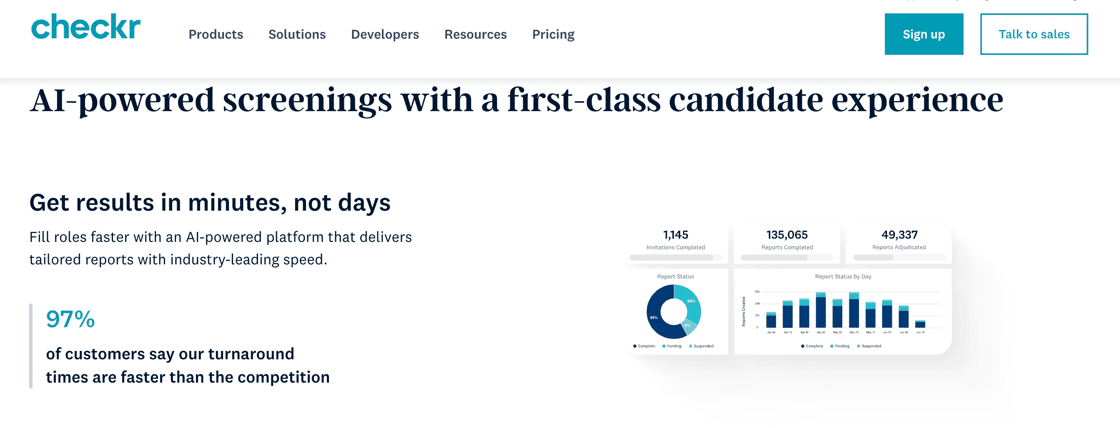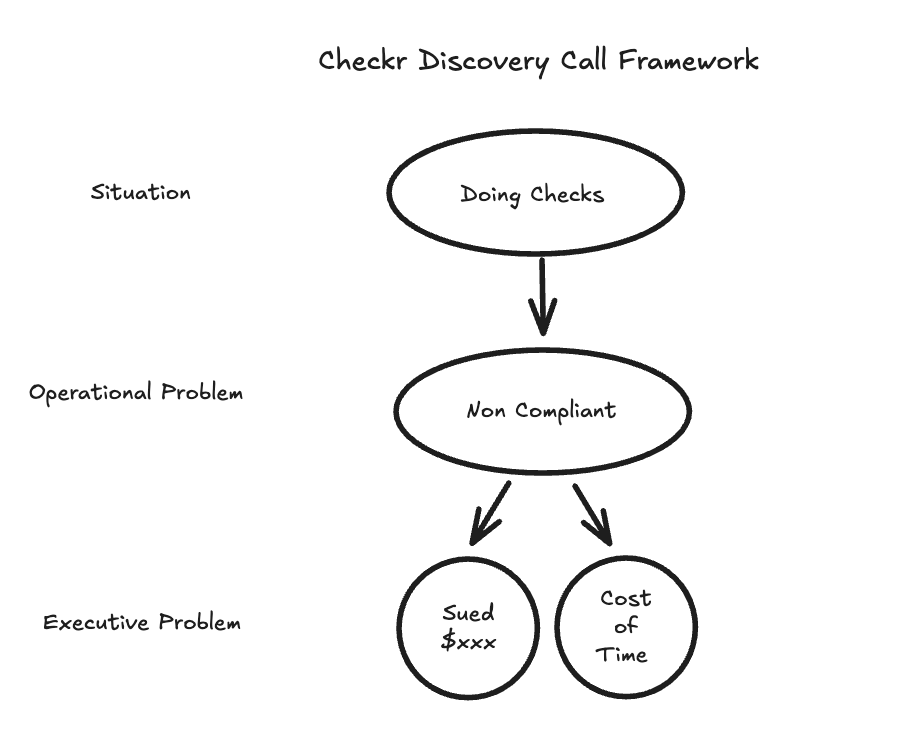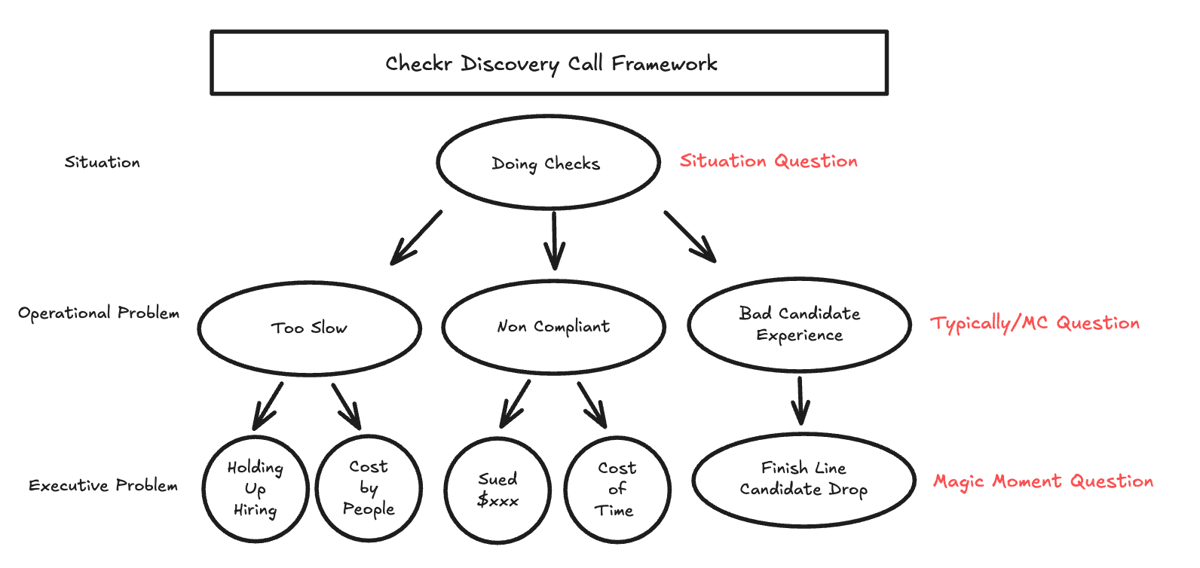Ever run a discovery call for a product you’ve never sold before?
I’m taking on that challenge in today’s Noozy.
I’ll be using Checkr as an example — they’re a software company that helps businesses run background checks.
I don’t know a thing about them, but I’ll show you my 3-step discovery framework you can steal to crush your next disco:
- Understand the Problems Your Product Solves
- Build Your Discovery Tree
- Navigate the Discovery Tree from Top to Bottom
Let’s get into it.

1. Understand the Problems Your Product Solves
Here’s the #1 reason most reps finish discovery calls without uncovering a single meaningful challenge:
They obsess over asking the “perfect discovery question” instead of understanding the problem they’re trying to uncover first.
You can use the “perfect” canned discovery question, but if you point it at the wrong problem it doesn’t matter.
The easiest way to figure out the problem you solve is to invert the feature-benefit on your website:
Checkr’s website references 3 feature-benefits on the left, see how we turned it into problems on the right:

Now we need to figure out how to turn these into bigger problems in discovery.

2. Build Your Discovery Call Tree
In order to build a discovery call tree, it’s important to first understand the 3 levels of discovery:
- Situation: These have nothing to do with the problem, it’s simply how they do the thing today.
- Operational Problem: This is the day to day problem that is a pain for your champion.
- Executive Problem: This is the business impact (lost revenue, churned employees, risk).
Once you have all three uncovered for your product, you can build out the full discovery tree.
Watch how the “Non-Compliant” background check problem gets even bigger:
- Situation: They’re probably… doing background checks?
- Operational Problem: Non-compliantly (maybe because of state-specific regulations)
- Executive Program: Well, you could kinda get sued! Or you might have an HR person spending eons running separate background checks for every state!
You’ll see the fully fleshed out tree below.
Now it’s time to use questions to navigate the tree.

3. Navigate the Tree from Top to Bottom
Let’s continue that same example and play this out in a discovery call:
1. Uncover Situations with “Why’d You Take The Call”:
"My guess is you don’t take calls with everyone who reaches out. What prompted you to take this one today?"
(let’s say they give us a fuzzy answer like “our background check process isn’t scalable”)*
2. Uncover Operational Problems with Multiple-Choice Questions:
“Typically when teams run into issues with background checks, it’s one of three things: 1) The process is way too slow or manual, 2) They’re worried about compliance risk, or 3) The candidate experience is just horrendous. Which of the three is it for you?”
(they cite hiring remote workers where every state has a different background check)
3. Uncover Executive Problems with Magic Moment Questions (these always get you emotional stories):
"My guess is you didn’t just wake up yesterday and realize we can’t do background checks in a compliant way. I’m curious, when did you actually realize this was a problem?
Was something missed in a previous background check, was someone non compliant, or is this just something you need to do in order to prevent that stuff?"
9/10 times, they’ll drop into a long story about a non-compliant background check that created some legal risk. That’s your exec problem.
And that’s a wrap, folks!
That’s how you go from “I don’t even know this product” to running a discovery call that actually lands.
Want more like this? Watch me draw it all out live in this youtube video.
(PS: It’d mean the world if you subscribed and hit the bell to support the channel, folks)

















